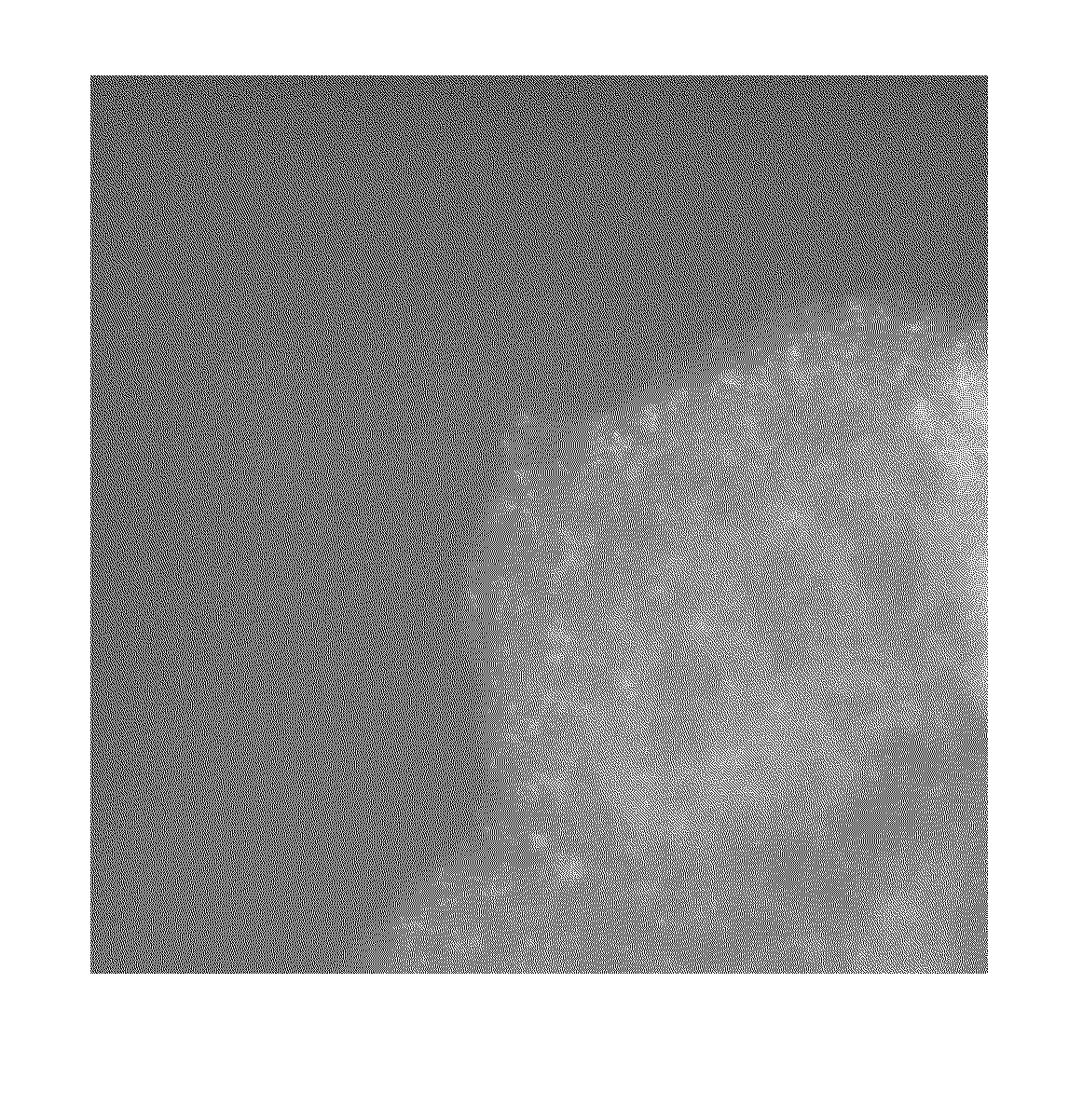Method of preparing precious metal nitride nanoparticle compositions
a precious metal nitride and composition technology, applied in the field of nanoparticles, can solve the problems of high cost, heat generation and damage, and the most grown precious metal nanoparticles are metallic metal particles
- Summary
- Abstract
- Description
- Claims
- Application Information
AI Technical Summary
Benefits of technology
Problems solved by technology
Method used
Image
Examples
example 1
PtNx on Carbon Black
[0038]2.01 grams of XC72 carbon black (Vulcan®, Cabot Corp., Alpharetta Ga.) was tumbled in a rotary mixer below sputtering source. An applied power of 22 watts was applied to the target in a steady flow of 20 sccm (standard cubic centimeters per minute) N2 gas at an applied pressure of 26 mtorr. After 1 hour 0.28 wt % Pt was deposited on the carbon black powder as estimated using inductively coupled plasma optical emission spectroscopy (ICP-OES). Nitrogen analysis using the Kjeldahl procedure estimated that the as deposited samples contained 0.119 wt % Nitrogen. Together this indicates a N:Pt atomic ratio of 5.9:1 (using molecular weights 14.0 gram / mole for Nitrogen and 195 grams / mole for Pt). Elemental analysis data from X-ray photoelectron spectroscopy (XPS) estimated a N:Pt ratio of 5.4:1 in good agreement with the elemental analysis data from the ICP-OES and Kjeldahl methods.
[0039]Platinum XPS measurements reveal the oxidation of Pt to Pt+ with incorporation...
example 2
PdNx on Carbon Black
[0041]2.01 grams of XC72 carbon black (Vulcan®, Cabot Corp., Alpharetta Ga.) was tumbled in a rotary mixer below a sputtering source. An applied power of 24 watts was applied to the target in a steady flow of 20 sccm (standard cubic centimeters per minute) N2 gas N2 gas at an applied pressure of 26 mtorr. After 2 hour 0.18 wt % Pd was deposited on the carbon black powder as estimated using inductively coupled plasma optical emission spectroscopy (ICP-OES). Nitrogen analysis using the Kjeldahl procedure estimated that the as deposited samples contained 0.159 wt % Nitrogen. Together this indicates a N:Pd atomic ratio of 6.7:1 (using molecular weights 14.0 gram / mole for Nitrogen and 106.42 grams / mole for Pd). Elemental analysis data from X-ray photoelectron spectroscopy (XPS) estimated a N:Pd ratio of 6.4:1 in good agreement with the elemental analysis data from the ICP-OES and Kjeldahl methods.
[0042]Palladium XPS measurements reveal the oxidation of Pd to Pd+ with ...
example 3
PtNx on TiO2
[0044]1.0 grams of TiO2 (Degussa Brand—P25) was tumbled in a rotary mixer below sputtering source. An applied power of 22 watts was applied to the target in a steady flow of 20 sccm (standard cubic centimeters per minute) N2 gas at an applied pressure of 26 mtorr. After 1 hour 0.31 wt % Pt was deposited on the carbon black powder as estimated using inductively coupled plasma optical emission spectroscopy (ICP-OES). Elemental analysis data from X-ray photoelectron spectroscopy (XPS) estimated a N:Pt ratio of 3:1. FIGS. 10-12 show aberration corrected Scanning transmission electron microscopy images for PtNx nanoparticles grown on carbon black. The bright white spots are the PtNx clusters.
[0045]The metal-nitride nanoparticle compositions of the invention could be of use in modifying catalytic metal properties or diluting the concentration of metal required for a catalyst or stabilize the metal particle against coarsening. Catalytic nanoparticles according to the invention...
PUM
| Property | Measurement | Unit |
|---|---|---|
| Diameter | aaaaa | aaaaa |
| Diameter | aaaaa | aaaaa |
| Diameter | aaaaa | aaaaa |
Abstract
Description
Claims
Application Information
 Login to View More
Login to View More - R&D
- Intellectual Property
- Life Sciences
- Materials
- Tech Scout
- Unparalleled Data Quality
- Higher Quality Content
- 60% Fewer Hallucinations
Browse by: Latest US Patents, China's latest patents, Technical Efficacy Thesaurus, Application Domain, Technology Topic, Popular Technical Reports.
© 2025 PatSnap. All rights reserved.Legal|Privacy policy|Modern Slavery Act Transparency Statement|Sitemap|About US| Contact US: help@patsnap.com



